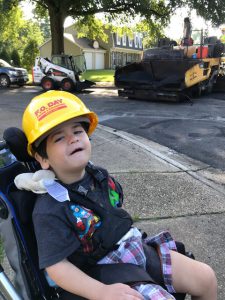 As our virtual learning school year has wrapped up in Northern Virginia, we are all left wondering what will be waiting for our students at the end of this summer “break”. The public schools are trying to figure out exactly how to walk the fine line between addressing a public health crisis while also maintaining high levels of instruction for children, and attempting to achieve programs that provide equity for all students. Truthfully, I am thankful I am not making the decisions. In the end, the decision made will inevitably leave many people frustrated. The truth is, there are no “right” decisions.
As our virtual learning school year has wrapped up in Northern Virginia, we are all left wondering what will be waiting for our students at the end of this summer “break”. The public schools are trying to figure out exactly how to walk the fine line between addressing a public health crisis while also maintaining high levels of instruction for children, and attempting to achieve programs that provide equity for all students. Truthfully, I am thankful I am not making the decisions. In the end, the decision made will inevitably leave many people frustrated. The truth is, there are no “right” decisions.
For my own typically developing children I have worries, but I also know we will be OK. They may not receive the great instruction they would in school, but being “behind” in first or third grade along with the rest of their peers is not going to topple them over in the long run. But for kids like Joey?
It’s nearly impossible to provide the needed instruction virtually for children like Joey. So what will happen? What’s more – a compromised immune system can make it even more difficult to go back into a fully functional school building. Add those concerns onto the idea that now we desperately need to make up for lost time and rebuild any communication and academic skills that were lost.
Where do we start planning, especially with the unknowns of what the schools will be able to offer next year?
One idea is to start to look beyond the schools and look at what we can potentially offer in addition to the limited school programs that will be available. What if we can create small groups that are able to safely meet in person while providing the social and academic support on those days that the schools will not be open.
Digging deeper into this idea – what if these small groups are able to offer the inclusive opportunities we know are best for students? What if these small groups could provide communication and academic activities to students like Joey, while also providing challenging projects designed to enhance academic skills to the other children included in the program. What would that look like?
What could a program like that achieve? Could we offer all students opportunities for higher level thinking while focusing on communication skills and academic content?
The wheels at Joey’s Foundation have been spinning for some time on this. Stay tuned for what’s to come.


